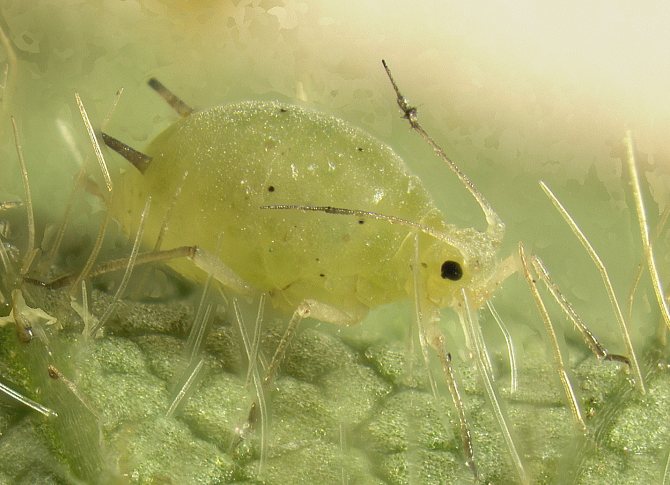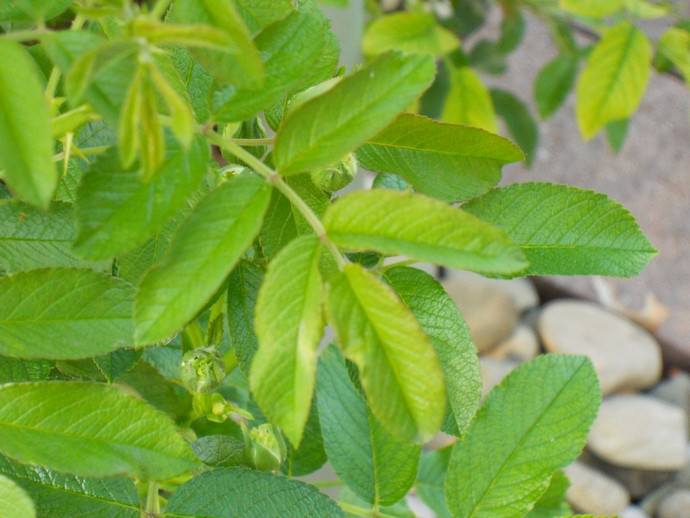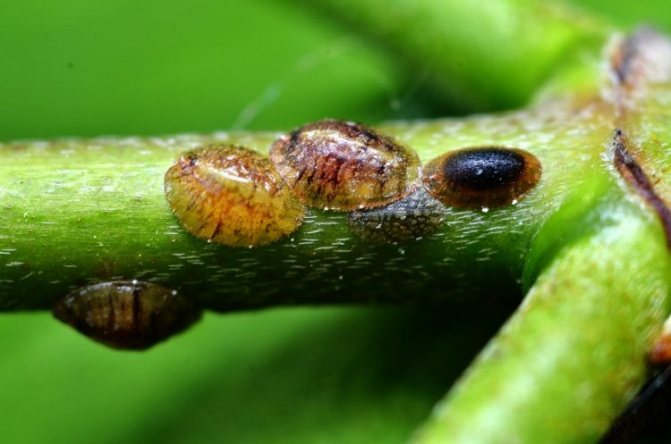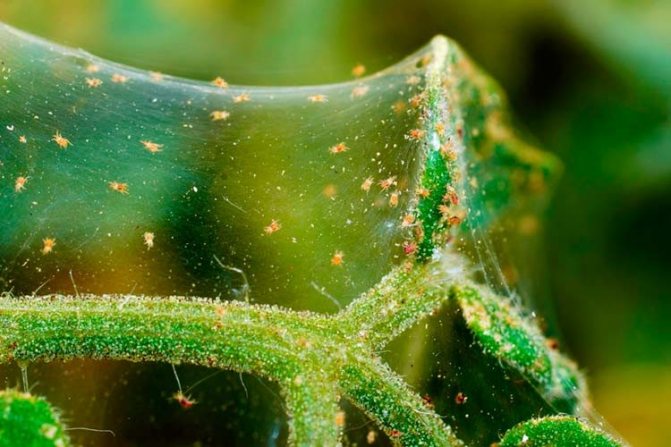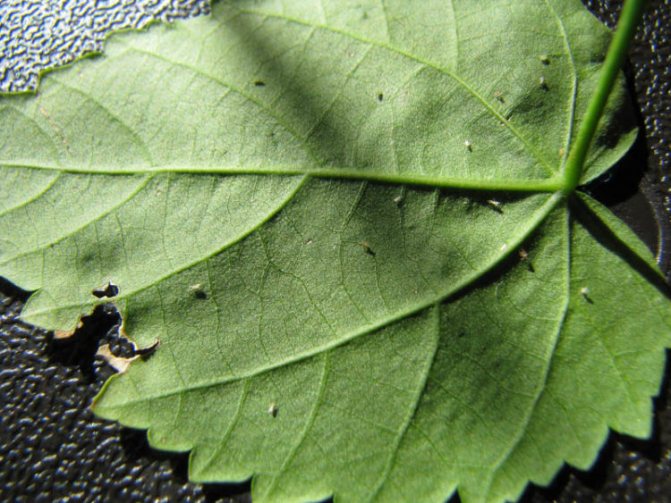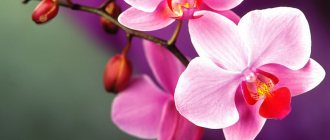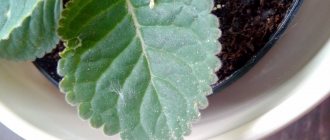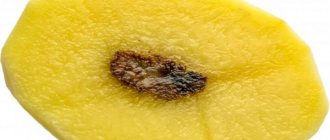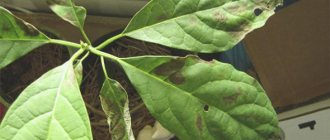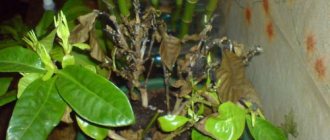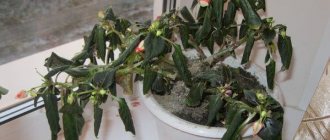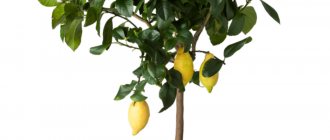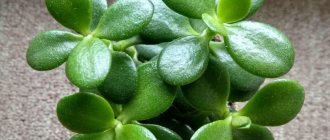What is yellowing?
Chinese rose, aka hibiscus, a pretty hardy plant... She stoically tolerates errors in care, but if they are not permanent. If the plant is constantly poured or not watered at all, then the plant will begin to die. His leaves will begin to turn yellow and fall off, then buds and flowers. And if you do not pay attention to this, he will die.
This is not about natural aging, but about the causes of yellowing in a young plant. When the plant loses its beauty for other reasons. Therefore, the yellowing of the leaves is a signal that something is wrong with the Chinese rose.
Poor indoor conditions
But most often, all the same, the buds of indoor hibiscus fall off for household reasons. And this is due to improper care of such plants. If at least one bud has fallen off for no apparent reason, this already suggests that some (even one) condition for good growth and development of hibiscus is not met.
Back to the table of contents
Unsuitable temperature
Hibiscus can also shed its buds at inappropriate indoor temperatures.
In the event that the plant is not satisfied with the air temperature, it begins to actively shed the buds. The optimal temperature is considered to be about 23 ° C in summer and about 18 ° C in winter. If the room is colder than the minimum allowed, the plant can shed the bud even before it begins to open.
If the ambient temperature is too high, in addition, the humidity, on the contrary, is low, the buds may begin to dry out and, as a result, will fall off on their own. This is also accompanied by the yellowing of the edges of the leaves of indoor hibiscus.
To eliminate this phenomenon, it is necessary to ensure the correct air temperature for the plant. At the same time, it is very important that, both in summer and in winter, the plant is not in a draft. This is especially true during the flowering and growing season, when hibiscus is actively developing.
Why does this happen to a houseplant?
Partial yellowing of leaves, with spots caused by various reasons. Let's consider them in more detail.
Incorrectly selected pot
It is easy to check whether the pot is correct. Water the flower in the morning, and in the evening check the condition of the earthen ball in the middle of the pot. If the ground is dry, the vessel is small for him, we urgently transplant... Otherwise, the leaves will begin to turn yellow, as the flower will try to reduce the evaporation of moisture, shedding excess leaves.
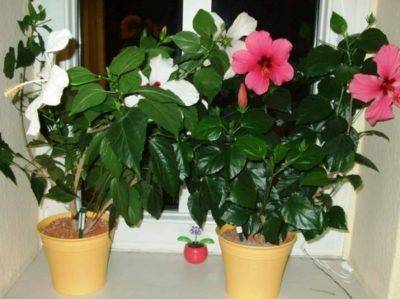
The new pot should be 1 to 2 cm larger in diameter than the previous one. The transplant is carried out by transshipment so as not to injure the roots. The pot must have good drainage. The transplant is carried out in moist soil, watering begins on the third day.
If water constantly accumulates in the pan, the roots will begin to rot, the leaves will turn yellow and fall off.... This indicates that the capacity is large. As in the previous case, a transplant is needed. We remove the plant, along with an earthen lump, from the pot and check for rot. If rot appears, remove it, and dust the places of the cuts with crushed charcoal. We do the transplant in a smaller pot, and adjust the watering.
Care errors
- Chinese rose is a tropical plant and does not like drafts.... It should not be placed within reach of fans and air conditioners. And when airing the room, it is recommended to cover it with a screen.
- Incorrect lighting... This factor leads to the following consequences:
- With a lack of lighting, the rose sheds its leaves, guided by the principle: fewer leaves, less light is needed.
With a lack of sunlight, the leaves turn yellow on the shaded side.
- The bright sun is also harmful - the leaves can get sunburn.
- The yellowing of the upper leaves of the flowers indicates a lack of nutrients.... It can be corrected by increasing the dosage of fertilizers or the frequency of feeding. But this must be done carefully so as not to overfeed. Problems also arise from an excess of fertilizers.
- Low ambient temperature... Since hibiscus is native to the tropics, it means thermophilic. The temperature in the room where the rose is kept should be in the range of 18-300 C. Otherwise, the plant begins to shed its leaves. During the rest period, the temperature should not be lower than 15 degrees.
The best option is diffused sunlight. If there is a lack of natural light, fluorescent lamps will help.
Diseases and pests
Chlorosis
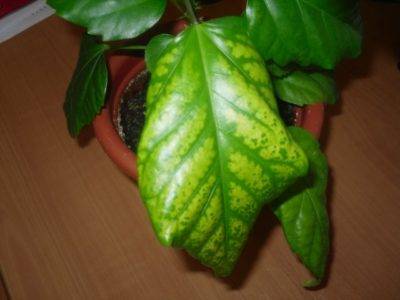

When a Chinese rose is infected with viruses, the leaves not only turn yellow, but also become stained. One of the most common viruses is chlorosis. In a plant infected with chlorosis, the leaves turn yellow, and the veins retain their natural color.
Chlorosis speaks of improper soil acidity... Sometimes the leaves of an infected plant turn yellow only where the source of the disease has appeared. And sometimes the leaves turn yellow and fall off, the tops of plants and underdeveloped roots die off.
It can be corrected by a complex mineral fertilizer such as "Uniflor-Micro", as well as by transplanting into another soil. Spraying with iron chelate will also help. To avoid chlorosis, it is not recommended to water the flower with hard tap water, because it will oxidize the soil.
Spider mite
Another reason for yellowing leaves is spider mites.... It can be detected only if you examine the leaves with a magnifying glass. Without a magnifying glass, you can see a weightless cobweb on the leaves and buds.
To save a sick plant, insecticides, which are sold in flower shops, or washing the leaves with soapy water, will help. After washing, the flower is sent to the shower. Cover the soil in the pot with foil.
Even with the help of insecticides, the plant recovers for a very long time.... To prevent the spread of the tick, you need to prophylactically treat it twice a year. Treatment is carried out with the drugs Agravertiv, Fufan or Aktllik. It is processed three times at intervals of four days.
Spider mites start where the air is dry. Therefore, in rooms where dry air you need to use humidifiers or place a container of water near the flowers. Regular spraying has a beneficial effect on hibiscus.
Determination and elimination of causes
Currently, it is possible to independently identify and begin the most effective treatment of several damaging factors that provoke lack of flowering or causing defective flowering of a garden rose:
- very weakened buds are affected by a spider mite, and the black-brown rot formed during the life of the pest does not allow the bud to fully open;
- if damaged by a plant parasite, dark spots may form on the stem of the plant, and the petals of the buds will be covered with a dark gray bloom, which causes them to dry out and fall prematurely;
- rotting of unblown rose buds is most often the result of powdery mildew damage, damage to which is also accompanied by the formation of a whitish bloom on the buds or foliage;
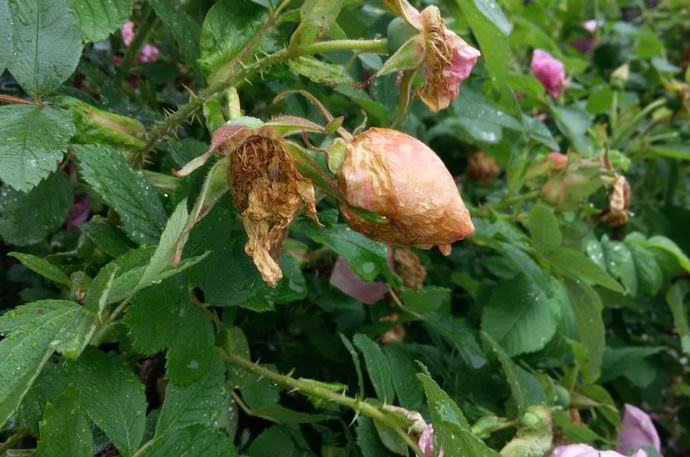

- if a lesion with powdery mildew is detected, it is recommended to treat the above-ground part of the rose with a special preparation "Rose Rescuer" or to spray the ornamental culture in early spring, as well as in the fall with a 1% solution based on copper sulfate;
- such a disease as botrytis occurs when the plantings are thickened and when irrigation measures are taken in the rose garden in the late evening;
- Botrix most often affects damaged plant tissues. In this case, the edges of the petals look like a marginal burn, and then, at the stage of necrosis, the growth of a fungal infection begins. This phenomenon may also be the result of a non-optimal temperature regime in the root zone, a low level of transpiration and a lack of calcium.
Thus, in addition to diseases and pests, the main adverse factors causing problems with budding and flowering of a garden rose are bad weather conditions, high humidity or dryness for a long time, insufficient lighting and ventilation of flower beds, as well as mechanical damage to flower stalks.
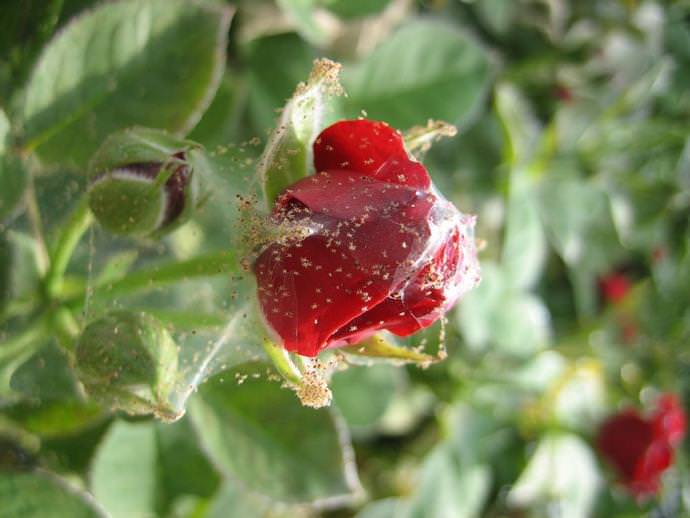

Why does hibiscus shed its buds?
Chinese rose buds turn yellow and crumble for several reasons:
- If, during budding, the hibiscus pot is rearranged from place to place. The pot should be in one place.
- If the plant is in a poorly lit place. Move it closer to the light.
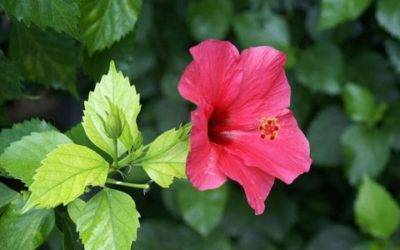

If the flower is watered with cold water. Water for irrigation should be used at room temperature and separated. You can use melt water after defrosting the freezer.- When the soil dries out in a pot. Water it regularly, in the morning or evening, every two days.
- With strong waterlogging of the substrate.
- With a lack of fertilizer. During the growing season and flowering, hibiscus requires more nutrients than during the rest period. It must be fed with a complex fertilizer, in which the minimum amount of phosphorus. From an excess of phosphorus, the leaves turn yellow. Top dressing should be applied in cloudy weather, in well-moistened soil.
- If the plant has the wrong soil. The soil should consist of two parts of turf and one part of humus, leafy earth and sand.
After finding out the reason for the yellowing of the leaves of the Chinese rose, and after removing it, the flower will quickly recover. Long shoots can be trimmed at this time.
In addition, you can find out why the buds and leaves of hibiscus fall off here, and here we also talked about why the plant does not bloom.
Why is this happening?
There can be many reasons why hibiscus leaves fell off. Let's consider the most common ones.
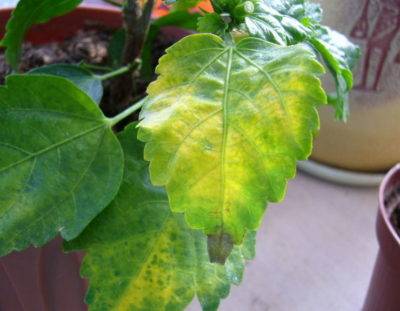

Natural reasons. Chinese rose leaves can turn yellow and fall off for no apparent reason. If the flower is kept in favorable conditions and it is provided with proper care, you should not panic if a couple of leaves have turned yellow and fell off on it. It `s naturally. This is how the plant gets rid of old leaves.- Lighting. The Chinese rose grows well in both good light and shaded conditions. However, it is worth knowing that it does not tolerate sudden changes in lighting conditions. Moving a plant to the street, or, conversely, from street to room, can cause stress for him. The consequences of stress are yellowing and loss of foliage.
- Improper watering. An excess of moisture in the soil, like its lack, negatively affects the condition of the rose. It is necessary to keep the soil moist, but avoid excess. Stagnant water leads to decay of the root system, and, in turn, to foliage falling. Lack of moisture can also cause leaves to fall off.
- Violation of the temperature regime. The Chinese rose loves warmth. The optimum temperature for her is from 20 to 30 degrees. Exceeding this range, as well as sudden temperature changes, can provoke yellowing and leaf fall.It is necessary to protect the rose from cold drafts.
- Improper feeding. An overabundance of some and a lack of other substances can adversely affect hibiscus. So, magnesium and potassium are essential elements for it, which should be contained in large quantities. But an excess of nitrogen and phosphorus can cause yellowing of the leaves.
- Diseases. The most common disease in the Chinese rose is chlorosis. It is usually caused by hard water, as well as alkaline soil and iron deficiency. Chlorosis can kill the flower in a short time.
- Pests. The spider mite is the pest that most commonly infects the Chinese rose. It leads to yellowing and wilting of the leaves, which subsequently fall off profusely.
Failure to meet the basic needs of the Chinese rose
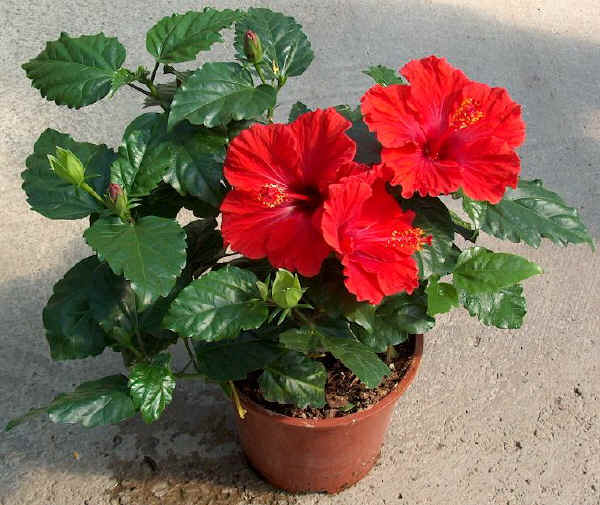

Any houseplant, hibiscus is no exception to the rule, requires special personal care.
It is always important for him:
- air temperature and humidity in the room;
- lighting;
- regularity and intensity of watering;
- preparation for the winter period;
- soil quality.
Temperature and humidity levels
The air temperature in the room where the hibiscus is grown should not exceed + 23 ° C in summer and + 18 ° C in winter. The following pattern is observed in the development of Chinese rose buds: at low temperatures, the buds do not ripen, and at too high temperatures, they wither and fall off. Room humidity should be up to 70%. To maintain it at the proper level, you need to install a humidifier or ordinary containers of water near the hibiscus so that evaporation occurs. The Chinese rose loves frequent spraying of the foliage with a spray bottle. With proper moistening of the environment, the foliage of a houseplant has a bright green color.
Lighting and watering
Hibiscus is very fond of light. He needs sunlight for at least five hours a day. To provide the flower with an optimal light regime, you need to grow it on the southern windowsills. In partial shade, the flower may give few buds, which may fall off without blooming, or not bloom at all. Therefore, if the buds of the hibiscus are weak and wither, the plant should be rearranged to more illuminated places in the room without drafts.
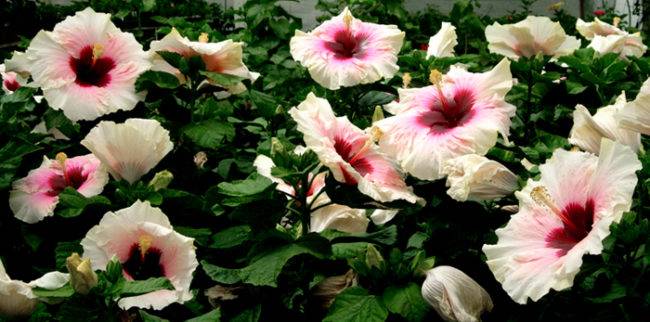

Most of all, the Chinese rose requires moisture during the active growth phase - from March to October. You need to water the flower once a day with settled water at room temperature, while you should not leave the water in the pan of the pot.
If you do not observe moderation of watering, the roots of the rose rot, it does not have enough strength to form buds and bloom, so they can fade.
In winter, the watering of the plant should be cut in half. You can determine the resting phase by dropping foliage by a rose.
Wintering
The hibiscus should be pruned before the resting phase. Strong and large inflorescences are formed only on fully formed shoots. The Chinese rose is shaped like a tree. Weak shoots are subject to pruning. After pruning, the hibiscus is provided with an optimal lighting regime and a cool temperature regime of at least + 15 ° C. Favorable wintering conditions make it possible for the plant to prepare for abundant flowering without dropping the buds.
Soil quality
Often, an indoor flower is bought in stores and is not transplanted into a new pot. The depletion of the plant occurs, in which the rose does not have the strength to bloom large buds, the plant gets rid of them in order to preserve the shoots and the root system. For hibiscus, a soil consisting of humus, turf, sand and leafy soil in a ratio of 2/1/1/1 is suitable.
Video: ROSE BLOSSOM. FIRST WAVE
At the moment, many drugs have been developed for pest control, they can be purchased in specialized stores or you can use folk methods by treating the plant with a solution of soap, tincture of tobacco or pepper.
Folk remedies for controlling hibiscus pests
Tincture of pepper (from aphids, ticks) -
Dry pepper is poured with water in a ratio of 1: 2 and boiled for an hour, then insisted and filtered. To spray a plant, 10 g of the drug is diluted in one liter of water and soap. You need to take about 5 g of soap per liter.
Tincture of tobacco (from aphids, thrips, ticks) -
1 kg of tobacco dust or tobacco is boiled in 10 liters of water for two hours. Insist for two days and filter. Before use, the concentrate is diluted in 10 liters of water with 50 g of soap.
Soap solution.
To prepare the drug, 200 g of potassium soap is diluted in 10 liters of water.
Mustard tincture (for ticks, aphids) -
50g of mustard is boiled in a liter of water and infused. Before use, the concentrate is diluted in 20 liters of water.
Agricultural technology is of great importance in keeping hibiscus: soil acidity, heat and light conditions, humidity of air and soil. Create comfort for the flower: do not move, treat pests, loosen the soil and water once a week and gradually the hibiscus will grow new leaves.
Pest control
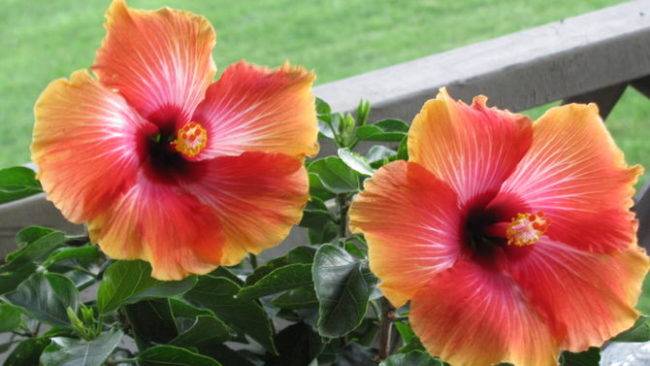

One of the reasons why the Chinese hibiscus sheds numerous formed buds is the defeat of the rose by pests - aphids or spider mites. The fight against them consists in treating the plant with special chemicals, soapy water, and replacing the soil. Transplant into clean, fertile soil should be performed only if the Chinese rose has a fully formed root system.
The formed hibiscus flowers can fall off when there is an insufficient amount of nutrients in the soil, which the plant needs to maintain the necessary balance of forces for the development of foliage and buds. But it is better not to experiment with phosphorus, it has a detrimental effect on the rose.
Preventing the recurrence of the problem
Almost all diseases of rose bushes are difficult to treat., therefore, it is recommended to take preventive measures in advance to reduce the likelihood of problems:
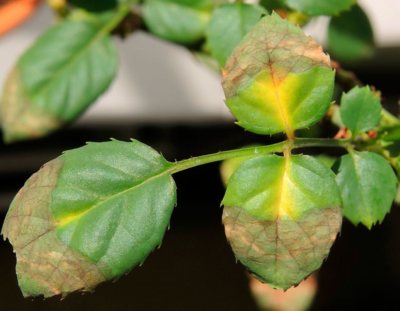

The buds and flowers of indoor plants fall
1. Perhaps the plant is standing in a cold draft... During ventilation, cold air currents from the vents can provoke not only the dropping of buds, but the death of leaves.
2. The water used for irrigation is too cold. Water for irrigation should be soft, separated, at room temperature.
3. Transplanting a plant at a time when it has gained buds or has already blossomed provoked the fall of buds or flowers. Even minimal damage to the root system of the plant leads to stress, as a result, the buds and flowers fall off. Wait for the plant to pause between flowering before transplanting.
4. The recently purchased plant had buds, and was transported (transferred) in unsuitable conditions (shaking, severe frost).
5. Too dry soil in a pot, long breaks between waterings, or, conversely, too damp soil. Adjust watering. The frequency of watering depends, firstly, on the type of plant (cacti and succulents prefer drought, and for calathea it is desirable that the earth is always damp), and secondly, on how quickly the topsoil dries out: in summer watering can be 2-3 once a week, in winter - once every 7-10 days.
6. The humidity in the room is too low.In order to increase the humidity of the air around the plant, spraying should be carried out carefully, not allowing moisture to get on the buds and flowers. To increase humidity, instead of spraying, you can put a pot with a plant on a pallet, in which a little water is poured and a layer of expanded clay is poured, the water in the pallet should not reach the bottom of the pot.
7. Depleted potting soil. First, you need to give the plant the opportunity to bloom, feed with phosphorus-potassium fertilizers, and then, when there is a pause between flowering, you need to transplant the plant into a new earthen mixture.
8. Incorrectly chosen fertilizer for feeding or not observing the dose of fertilizer can lead not only to dropping of the buds, but also to the loss of the entire plant.
9. There is not enough light. With a lack of lighting, photosynthesis in the leaves first slows down, which can lead to the dropping of the buds or to the fact that the buds that are about to bloom will not bloom (the color in the bud disappears, a dummy remains). Some plants, such as the house rose, stop flowering altogether.
10. Some plants shed their buds and flowers because the room temperature is too high. Some cold-loving plants, for example, azaleas, cyclamens, camellias, primroses, bloom and will bloom for a long time only at an air temperature of +12 +15 0С.
11. Some plants are sensitive not only to rearrangement from place to place, but even to the rotation of the pot. Plants such as hibiscus, gardenia, and hoya can shed their buds and flowers only because you put the flower pot a little wrong after wet cleaning.
In order to put the pot in exactly the same position after cleaning, a small beacon will help: a match, a toothpick, a pen cap. Stick the beacon into the ground and match it to the beacon in another pot or to the mark on the window frame. This will place the flowerpot in the same position it was in before harvesting, and the plant will delight you with its flowers. When buds appear, try not to move the pot.
12. The cause of bud fall can be caused by pests: whiteflies, spider mites, scale insects, thrips. Treat pests with insecticides or acaricides (for ticks). Falling buds can also be triggered by earth pests: millipedes, earthworms, and mowing grubs.
Diseases and pests
The most common pests of indoor hibiscus are white aphids and spider mites. Aphid infestation is evidenced by insect populations that have accumulated on the underside of the leaves, as well as small white larvae that slowly move throughout the plant. Hibiscus reacts to this pest by wilting and then dropping the buds.
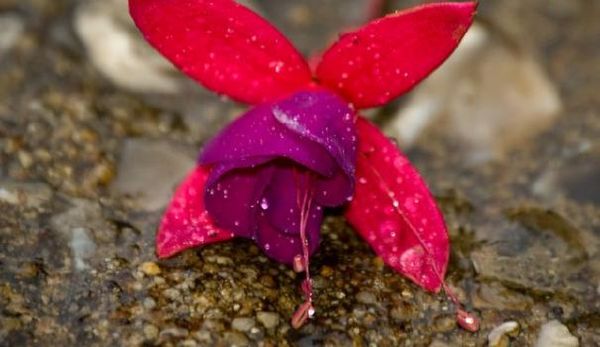

In a dry and hot room, indoor flowers are often affected by spider mites. Its presence is indicated by the thinnest cobweb on the plant and a sticky coating on individual leaves. The activity of the parasite leads to the weakening of the tree and, as a result, to the dropping of buds. Preventing ticks on hibiscus is very simple: you need to spray the plant more often and humidify the air.
If, in addition to dropping the flowers, the leaves turn yellow and fall off the tree, then the reason may lie in the decay of the root system. This process is provoked by putrefactive bacteria that grow in the soil when the plants are watered with too cold water. Only transplanting and replacing the soil can save the flower.
Why does a rose shed its leaves what to do
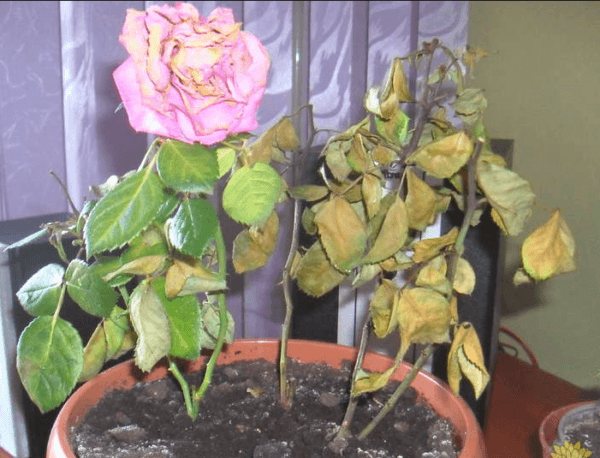

Understanding the reasons, of course, is necessary and important, but it is very important to do this quickly in order to help the bushes in time and restore them by the time they begin to prepare for winter.
What happened to the rose?
Having planted a rose bush very often, we do not pay attention to the foliage. Buds and flowers are what interests the grower in the first place.But when the foliage becomes covered with black or brown spots, or the shoot is completely bare, we begin to sound the alarm.
The unsightly foliage or its complete absence is not only and not so much an aesthetic problem (it is impossible to make a beautiful bouquet with such a flower), but a problem that can lead to the death of a rose bush.
The leaves of the rose do not crumble all at once, this process was certainly preceded by some events, it could be:
- black spots on the leaf plate;
- brown spots on foliage;
- felt continuous plaque;
- white powdery coating;
- yellowing of foliage, starting with veins.
After some time, the rose sheds its leaves and this is not the norm, but a sign of the disease.
Why did the rose get sick?
Especially often this question arises when the rose bush grows for the first year and the annual flowering was lush and pleasing to the eye. In this case, it is necessary to analyze the climatic parameters of past years and this year. On reflection, it becomes clear that nature "pampered" us and comforted us with its warmth and sun in previous years, and in this it rained and cooled with the wind, as a result, microscopic pathogenic fungi hit the rose bushes. Either light night rainfall alternated with intense daytime heat, which served as excellent conditions for the multiplication of fungi.
Promote increased virulence of microorganisms:
- high humidity;
- dampness;
- cold winds;
- cold night dew;
- alternation of heat and cold with high humidity.
The mushrooms have begun their active phase. The leaves curled up, covered with spots and gradually fell off.
There are not so many fungal diseases that cause leaf fall, but in order to help a rose bush, you need to know them "by sight".
Why did your rose get sick?
To maintain the immune status, the plant needs mineral elements that are part of the enzymes and act as an immunostabilizer.
If a rose bush has been growing for a long time, then the soil under it is depleted. Even if you are feeding nitrogenous fertilizers in early spring, this gives him the opportunity to "shoot" fat shoots through force, but does not add strength to fight the microflora.
If you are feeding potash and phosphorus fertilizers before budding, this will give the opportunity to set the buds and dissolve from, but again will not give the opportunity to fight the infection.
Without the addition of organic fertilizers, without partial replacement of the soil under the bushes, the beneficial microflora of the soil weakens, and the nutrients pass into a form inaccessible to the rose bush. The plant lowers immunity, and in microscopic fungi, virulence increases, which leads to the manifestation of the disease.
Black spot of roses
The most common disease. Rose growers joke "There is a rose - there is a spot." Unfortunately, breeders have not yet managed to breed a rose variety that is resistant to the fungus that causes this disease. There are varieties that are more or less resistant, but not completely resistant.
Examining the leaf plate from above, we see black spots, which sometimes go to the shoot. Over time, the leaves turn brown and crumble.
Rose rust
If the shoot is already bare, then to answer the question "Why do roses shed their leaves in the summer?" you need to consider the remaining foliage, or the one that lies under the bush.
On the inside of the pink leaf, you can see small orange, slightly velvety heaps - these are mushrooms. After a while, the lesion increases, the leaf turns yellow and falls off.
Polyanthus, climbing and hybrid tea roses are more susceptible to rust.
Powdery mildew of roses
Initially, the leaf becomes covered with white spots, they grow, and now the leaf becomes completely white, as if sprinkled with flour. Photosynthesis stops, the leaf plate twists and falls off.
Shoots are covered with felt, in places forming "pads". Over time, the plaque turns brown.Growth stops, flowering does not occur. In winter, the affected bush may die.
This fungus develops in a humid environment, but at a high temperature.
there is varieties of roses, which the fungus causing this disease does not affect, for example: "New Down", "Gloria Den", "Excels".
What a florist can do to protect his queen, help her dodge an attack - of course, reduce the number of fungal spores.
Possible causes of falling buds
Novice growers often make mistakes in caring for a flower, then wondering why hibiscus buds fall off. Some of the most common mistakes are worth dwelling on.
Under unfavorable conditions (more often in winter), a houseplant can even shed its leaves, being at rest for up to three months. If you do not allow the earth to dry out and periodically loosen its top layer, then, having rested, the flower will release new leaves and grow.
Aphids or root rot
Often the buds fall off due to the fact that aphids are sucked out of the plants. She loves to settle on young shoots and buds, having got over from neighboring flowers. If a colony of parasites is found, you need to wash the flower with soap and water, if this is not enough, then apply special preparations. It is better to start with folk remedies - tobacco, garlic, ash, onions.
Pests usually wander from plant to plant, so the treatment is done on all indoor flowers at the same time.
The flower may be affected by root rot or other fungal infections. This happens in high humidity with insufficient light, or when the plant is standing in a draft. The plant withers, the leaves become stained, turn yellow, the leaves and buds fall off, and the roots rot.
Sick plants are removed from the pot, the decayed roots are pruned, disinfected in a manganese solution or sprinkled with crushed activated carbon. Then they are transplanted into a new earthen substrate, removing the spoiled leaves. Treatment with fungicides is used: Oxyhom, Fundazol and others.
Unsuitable temperature
In warm weather, hibiscus is suitable for temperatures up to +25 degrees. In winter, it should not fall below +10 degrees, otherwise the plant will shed its leaves.
For setting flower buds, the optimum temperature is not higher than +17 degrees. Therefore, in the fall, it is advisable to relocate the flower to a cool room with good lighting. This stimulates flowering. In March, when the first leaves appear on the branches, it is returned to its usual place.
Watering and lighting errors
This tropical plant is photophilous, it does not die in the shade, but it can drop buds or not release them at all. The best place for hibiscus is a tall stand near the south or east window. In winter, the flower needs lighting. A daylight dump is directed at it from a distance of half a meter, extending daylight hours to 8 hours. Otherwise, the plant will not be able to bloom at the right time.
When caring for hibiscus, watering conditions should be taken into account: in spring and summer it is plentiful, and in winter - as needed. Water is used at room temperature, settled in a jar with a wide neck.
The shrub does not tolerate drying out of the soil, sheds leaves and buds. In the heat, the moisture in the pot is retained better if you pour fine expanded clay on top or lay out moss... At this time, it is still useful to regularly spray the plant or put a humidifier nearby. In winter, a vessel with water is placed on or near the radiator. Artificial moisturizing also does not hurt.
In warm weather, it is good to arrange a warm shower for the plant. In order to prevent stagnation of water at the roots at the same time, it is better to cover the ground with a film during the procedure.
When spraying hibiscus, you need to be wary of water getting on the buds and flowers.
Top dressing and stress
To feed the shrubs, use universal fertilizers for indoor flowering plants with a minimum nitrogen content ("Ideal", "Rainbow").For leaves, foliar feeding with infusion of onion peels is useful. They get larger and shine. It is also a prevention against pest attacks.
In spring, nitrogenous fertilizers are preferred for plants, in summer, potassium-phosphorus fertilizers. Fertilizers are applied on cool days in the morning or in the evening twice a month after watering. In winter, this is done twice less. At the same time, nitrogen substances are not added to the nutrient mixture in winter.
A tropical perennial needs magnesium: due to a deficiency of the mineral, the leaves turn yellow. If the doses of fertilizers are not indicated, then they are dissolved at the rate of 1 g per liter of water. This schedule and nutrient selection prolongs flowering and helps in better bud formation.
Feeding of transplanted plants begins only a week after the procedure.
Stress is one of the major causes of unopened buds falling off. The flower experiences this state during radical changes: change of habitat, draft, transplant, watering with cold water. Therefore, during flowering, do not repot or move flower pots. You can only rotate them periodically to avoid curving the bush.
Abrupt change in conditions of detention
Changing the conditions of care is extremely harmful to the flowering plant. Therefore, in this important period for him, it is better for caring flower growers not to go on vacation, entrusting the care of a pet to little-informed people.
Soil quality
Hibiscus needs loose, breathable soil. A mixture of 2 parts garden soil and 1 part universal substrate for flowers is suitable for him. Ideally, if the soil is composed of pine, leafy soil, humus, peat with a small addition of charcoal or activated carbon.
The bottom of the pot must be covered with drainage, which includes expanded clay or brick fragments.
The acidity of the soil mixture should be close to neutral (from 5.5 to 7.8). If it is higher or lower than the maximum permissible, then due to lack of nutrition, flowering can not be expected.
Question: The first bud of my hibiscus was back when I cut the stem for rooting. He never blossomed and fell into disgrace. The same trouble happened with the two buds that appeared on the plant, when it was already old enough. The hibiscus looks outwardly healthy. Can you please tell me what causes the buds to fall off and what does hibiscus lack for normal flowering?
Answer: Naturally, a hibiscus cuttings that have not really developed roots yet, but already threw away the bud, there was not enough strength for flowering either. Therefore, the plant decided to part with the future flower. Usually, when storing hibiscus cuttings for further rooting, no more than two or three internodes are left in them, the leaves are shortened by 1/3 and all the buds that are present or formed during this period are removed. Otherwise, all the nutrients will be spent not on the formation of the root system, but on flowering.
A plant with a weak root system will shed buds at the slightest change in the conditions of detention (for example, from a single drying out of an earthen coma or a slight change in the light regime) and will never give a full-fledged abundant flowering.
In this case, pruning will have a beneficial effect on the development of the plant. Shorten all shoots, 8-10 cm long by 1/3, in order to stimulate the growth of the lateral branches and their further flowering. You can do this throughout the year. But usually the plants are pruned immediately after flowering or (as happened with this hibiscus) dropping the buds. In this case, the plant can also be given a certain shape.
It usually takes 3-4 months from the time of pruning to the beginning of flowering. During active growth hibiscus watered abundantly, often sprayed and periodically (once every 10 days) fed with easily water-soluble fertilizers. For flowering plants, fertilizers rich in potassium are recommended to extend the flowering period.
In the spring transplant the hibiscus into nutrient soil, consisting of leafy earth and turf and humus in a ratio of 1: 2: 1. And place it in a bright place, but without the scorching midday sun rays.
In winter, keep it cool with moderate watering, with temperatures between 14-16 degrees. The rest period will promote the formation of flower buds and normal flowering hibiscus further.
On a note:
Megasquepasma reddish - When a flowering Megasquepasma bush comes into your field of vision, it seems like it is indeed covered by a bright red cape. Coming closer, you see that such an impression is created by large, candle-like, glowing apical inflorescences.
Outdoor garden rose care
Outdoor rose care begins from the moment of planting. And it is best to plant them in spring, at a soil temperature of 8-10 ° C. With an autumn planting, you can not guess. If you plant early, the bush will start growing, and with the onset of cold weather it will die. If planted late, frost will destroy the root system.
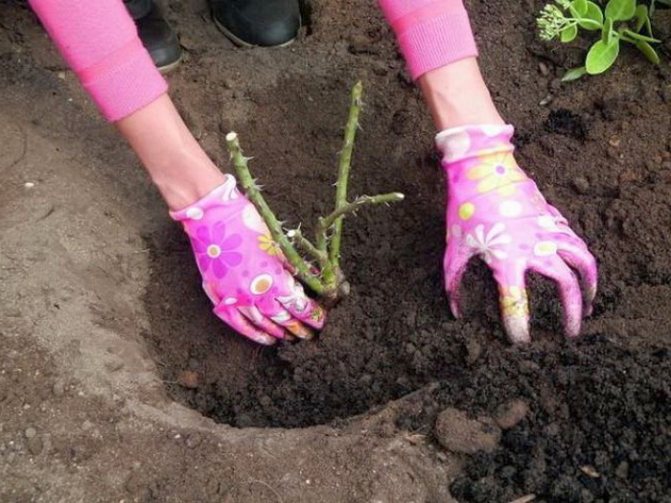

Planting roses in autumn
Planting roses
Why does a rose have dry leaves
Before planting, a place is prepared in advance: the earth is dug up, weeds are cleared and the soil is enriched. Pits are prepared depending on the size of the bush. The distance between them must be at least half a meter. The holes themselves should be made wide and deep (1 m and 0.5 m, respectively). A thick layer of drainage of at least 10 cm is laid at the bottom of the hole, otherwise the roots can rot from stagnant water.
The soil is prepared from the ground, humus. If the soil is heavy or clayey, then sand or peat should be added, and if the soil is acidic, dolomite flour, lime or chalk will be required.
Further, the very planting of a new plant. To do this, the roots are straightened along the bottom of the hole and covered with ready-made soil. The final stage is watering and mulching the root zone of the bush.
Note! Before planting, the seedling must be pruned to strong buds. There must be at least 5 of them.
Winter maintenance of bushes
Before frosts, soil (peat, humus, sawdust, rotted foliage) up to 0.5 m high is poured into the root zone of the plant.With the onset of a stable subzero temperature, a spruce tree hut is built over each bush, which is covered with a non-woven, breathable material on top. It will not hurt to cover everything from above with snow in winter. In the spring, the shelter is removed gradually. The last layer - high mulch - is removed when warm days come.
Pruning
A week after removing all the shelters, you can start pruning. In this case, all damaged branches are removed, and live ones are shortened by a third. To give the correct shape to the crown, improperly growing shoots (for example, directed inside the bush) are cut out. The entire bush is treated with a 1% solution of copper sulfate, and fresh cuts - with crushed coal, cinnamon or ash.
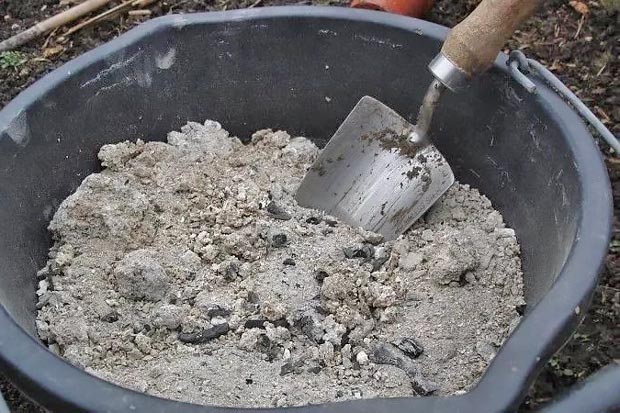

Fertilizer ash
Top dressing of bushes
The next step is to feed the roses. Complex fertilizers such as ammofoska, azofoska are suitable. Organic matter should be used only once every 3 years.
Fertilizer can be applied dry, dropping into the soil, or dissolved in warm water and watering the plant.
Watering
Freshly planted seedlings should be watered every other day and, over time, reduce watering to weekly. In summer, well-rooted bushes are watered once every 2 weeks. The exception is very hot periods when it is necessary to water as the soil dries out.
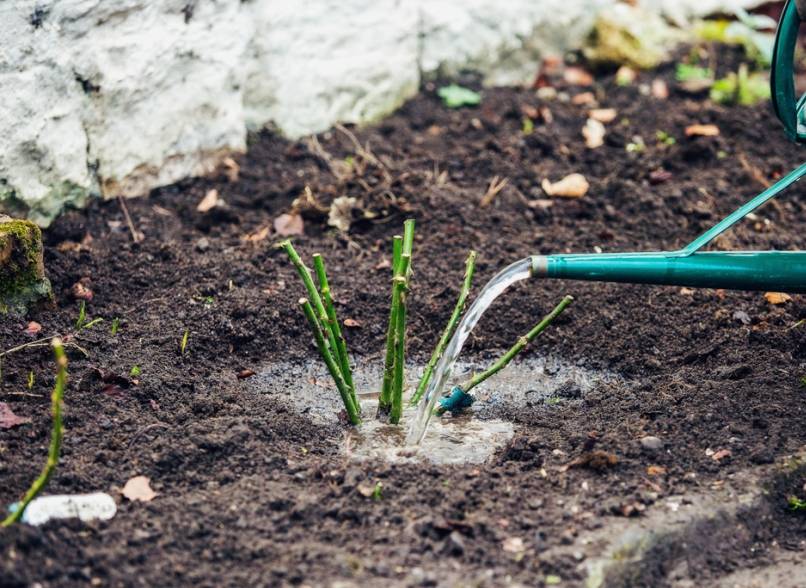

Watering
Closer to autumn (in August), watering is reduced. The last pre-winter watering before the shelter should be abundant.

